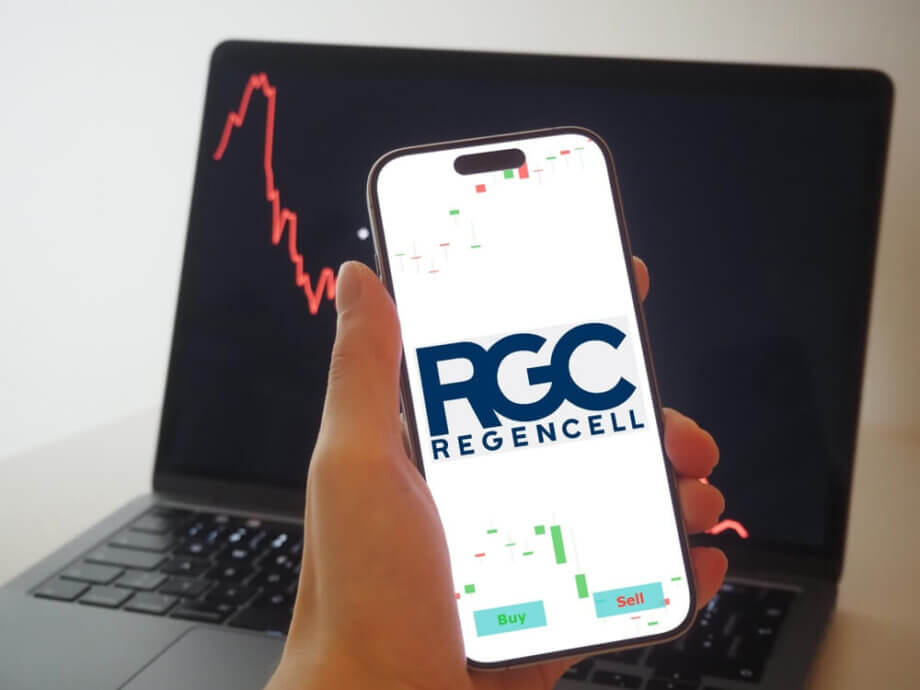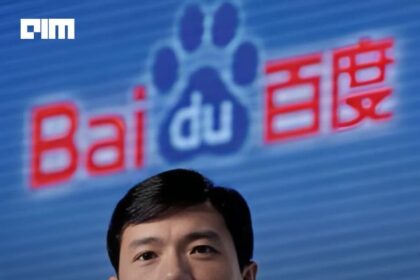The Unprecedented Rise and Fall of Regencell Bioscience
In June 2025, Regencell Bioscience Holdings Limited, a little-known Hong Kong-based biotech firm specializing in traditional Chinese medicine (TCM), stunned global markets with a stock surge of 82,000%. Within days, its founder and CEO, Yat-Gai Au, saw his paper fortune soar to $33 billion—briefly eclipsing the wealth of Hong Kong’s most storied tycoons—before plummeting back to earth. The extraordinary volatility, lack of clear business catalysts, and subsequent regulatory attention have made Regencell a case study in the risks and mysteries of modern equity markets.
- The Unprecedented Rise and Fall of Regencell Bioscience
- What Is Regencell Bioscience?
- How Did the Stock Surge Happen?
- Regulatory and Legal Scrutiny
- Business Fundamentals: A Disconnect from Valuation
- Comparisons to Other Market Phenomena
- Broader Implications for Investors and Markets
- What Comes Next?
- In Summary
What Is Regencell Bioscience?
Regencell Bioscience (NASDAQ: RGC) was founded in 2014 and is incorporated in the Cayman Islands, with its main office occupying an entire floor in Hong Kong’s bustling Causeway Bay. The company’s mission is to research, develop, and commercialize TCM-based treatments for neurodevelopmental disorders, particularly attention deficit hyperactivity disorder (ADHD) and autism spectrum disorder (ASD). Its core intellectual property consists of herbal formulas developed by the founder’s father, Sik-Kee Au, a TCM practitioner, and marketed under the “Brain Theory” trademark.
Despite its lofty ambitions, Regencell has never generated revenue, has posted net losses of $4.4 million and $6.1 million in the fiscal years ending June 2024 and 2023, respectively, and has not filed for regulatory approval of any of its products. The company’s chief medical officer position has been vacant since 2022, and its clinical evidence is limited to small, non-peer-reviewed case studies. Yet, Regencell’s social media presence is outsized, boasting over half a million Instagram followers—far more than established healthcare giants in the region—thanks in part to viral marketing campaigns, including Taylor Swift concert ticket giveaways.
Ownership and Governance
Yat-Gai Au, who holds an 86% stake in the company, is the dominant figure at Regencell. The second-largest shareholder is Digital Mobile Venture, controlled by Taiwanese investor Samuel Chen, known for his early investment in Zoom Video Communications. This concentrated ownership structure, with over 95% of shares held by insiders or affiliates, leaves a tiny public float, amplifying the stock’s volatility and susceptibility to dramatic price swings.
How Did the Stock Surge Happen?
Regencell’s stock had languished as a penny stock for most of its existence, trading below $1 per share as recently as April 2025. The catalyst for its meteoric rise was a 38-for-1 forward stock split, announced on June 2, 2025, and executed on June 16. The split reduced the share price from nearly $950 to around $60–$70, making it more accessible to retail investors and, in theory, enhancing liquidity.
However, the immediate aftermath saw shares quadruple on the first post-split trading day, triggering more than 10 volatility halts. At its peak, Regencell’s market capitalization exceeded $30 billion, surpassing established companies like Lululemon and eBay. The stock’s year-to-date gain reached an eye-watering 82,000%, with trading volumes spiking and message boards lighting up with both enthusiasm and skepticism.
Yet, there was no news of a scientific breakthrough, regulatory approval, or major partnership to justify the rally. The company had not released any new clinical data, nor had it announced any commercial deals. The only notable event was the stock split itself—a technical maneuver that does not alter a company’s underlying value.
The Role of Market Structure and Social Media
Several factors contributed to the explosive move:
- Tiny Public Float: With only about 30 million shares available for trading out of 500 million post-split, and most held by insiders, even modest buying or selling could move the price dramatically.
- Short Squeeze Dynamics: According to EquiLend, Regencell’s short squeeze score surged from 21 to 88 in a week, with utilization rates (the percentage of available shares being borrowed for short selling) approaching 86% and borrow fees at an extraordinary 60,000 basis points (600% annualized). This made it extremely costly for short sellers to maintain positions, potentially forcing them to buy back shares and drive the price higher.
- Retail Speculation and Meme Stock Phenomenon: The post-split “cheap” share price attracted retail traders, many of whom were drawn by social media buzz and the stock’s meme-like status on platforms such as Reddit and X. The company’s viral marketing, including celebrity ticket giveaways, further fueled attention.
Despite the frenzy, retail sentiment was mixed. A Stocktwits poll found that 52% of respondents considered the stock “too risky,” while only 31% were buyers. Many users expressed skepticism, noting the lack of revenue, clinical data, and analyst coverage.
Regulatory and Legal Scrutiny
The scale and opacity of Regencell’s rally quickly attracted the attention of regulators and legal experts. The Financial Industry Regulatory Authority (FINRA), which oversees broker-dealers in the U.S., has repeatedly warned that small, thinly traded stocks are vulnerable to manipulation, including so-called “pump-and-dump” schemes. The U.S. Securities and Exchange Commission (SEC) has also expressed concern about foreign private issuers—companies based overseas but listed on U.S. exchanges—especially those that avoid regular financial disclosures.
On June 4, 2025, the SEC called for public input on whether to tighten the definition of foreign private issuers, potentially subjecting companies like Regencell to stricter reporting requirements. While both the SEC and FINRA declined to comment on whether they were specifically investigating Regencell, experts say the company’s wild price swings are exactly the kind of anomaly that triggers automated surveillance and potential probes.
Securities Fraud Investigation
Adding to the scrutiny, law firm Levi & Korsinsky announced it had commenced an investigation into possible violations of federal securities laws by Regencell. The investigation was prompted by the stock’s dramatic rise and subsequent collapse, as well as the company’s 38-for-1 stock split. The firm, which specializes in securities litigation, is seeking to determine whether investors were misled or harmed by the company’s actions or disclosures.
Business Fundamentals: A Disconnect from Valuation
Despite its astronomical market capitalization at the peak, Regencell’s business fundamentals remain weak:
- No Revenue or Profits: The company has never generated revenue and continues to post annual losses.
- Lack of Clinical Validation: Regencell’s TCM formulas for ADHD and ASD are based on anecdotal evidence and small, non-peer-reviewed studies. There are no large-scale clinical trials or regulatory approvals.
- Vacant Key Positions: The chief medical officer role has been unfilled since 2022, raising questions about the company’s ability to advance its research.
- No Patents or Distribution Capabilities: The company has not secured intellectual property protection or established commercial distribution channels.
As Seeking Alpha and other analysts have noted, the stock’s valuation appears entirely narrative-driven, detached from any measurable business progress. The company’s own SEC filings warn that it “may never be profitable.”
Insider Activity and Buybacks
Some of the trading activity has been linked to insider transactions. CEO Yat-Gai Au has personally financed share buybacks, including a $6.2 million purchase from Digital Mobile Venture at a premium to the market price. These moves have further concentrated ownership and reduced the public float, exacerbating volatility.
Comparisons to Other Market Phenomena
Regencell’s saga is reminiscent of other speculative episodes in recent years, such as the 2022 surge in AMTD Digital, another Hong Kong-based company that briefly achieved a market value greater than Coca-Cola and Bank of America before crashing. In both cases, a combination of low float, retail speculation, and lack of fundamental news created a perfect storm for extreme price action.
Experts warn that such dynamics can create “liquidity traps,” where investors are lured in by rising prices only to be caught in a rapid reversal. The stock’s beta—a measure of volatility—has been estimated at -2.81, signaling extreme risk.
Broader Implications for Investors and Markets
The Regencell episode highlights several important lessons and risks for investors:
- Market Structure Matters: Stocks with low public floats and high insider ownership are prone to wild swings, especially when targeted by speculative traders or short squeezes.
- Due Diligence Is Essential: Investors should be wary of companies with no revenue, unproven products, and limited transparency. Viral marketing and social media buzz are no substitute for business fundamentals.
- Regulatory Oversight Is Evolving: The SEC and FINRA are increasingly using automated tools to detect market anomalies, but the global nature of modern markets and the rise of meme stocks present new challenges for enforcement.
- Retail Investors Face High Risks: While some traders may profit from momentum, many are left holding the bag when the music stops. As one Stocktwits user put it, “This reeks of a scam so bad. Hong Kong biotech with 12 full-time employees. Chinese medicine ancient herbs for ADHD. This will collapse.”
What Comes Next?
As of late June 2025, Regencell’s stock has retreated 74% from its peak, and Yat-Gai Au’s paper fortune has shrunk to around $8.6 billion. The company remains silent, declining to respond to media inquiries or provide updates on its business. Regulators and legal investigators are likely to continue scrutinizing the episode, and the SEC’s proposed rule changes could make it harder for similar companies to list in the U.S. without greater transparency.
For now, Regencell stands as a cautionary tale of how market mechanics, social media, and speculative fervor can combine to create—and destroy—billions in paper wealth almost overnight.
In Summary
- Regencell Bioscience, a Hong Kong-based TCM company, saw its stock surge 82,000% in June 2025, briefly reaching a $33 billion market cap.
- The rally was triggered by a 38-for-1 stock split, a tiny public float, and retail speculation, with no underlying business catalyst.
- The company has never generated revenue, lacks clinical validation, and has a vacant chief medical officer position.
- Regulatory and legal scrutiny has intensified, with the SEC and law firm Levi & Korsinsky investigating possible securities law violations.
- The episode highlights the risks of low-float, narrative-driven stocks and the importance of due diligence for investors.
- Regencell’s story serves as a warning about the dangers of speculative bubbles in modern equity markets.












